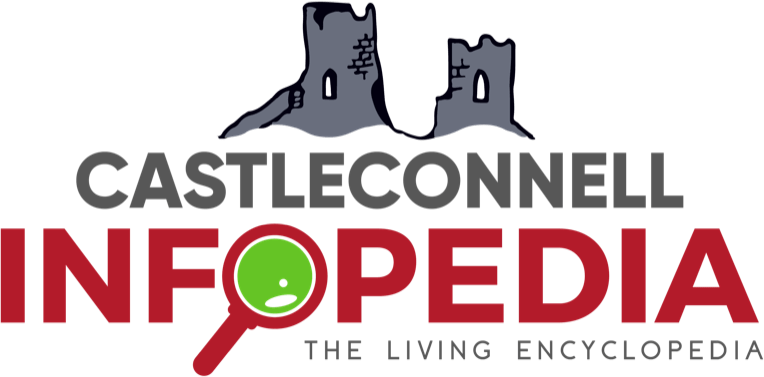This Story is: True Story
Napoleon’s death mask recovered in a small village in the south of Ireland
Annie Hartigan, was a small fiery, red-haired, dressmaker who lived all her life in Railway Cottage, now refurbished and renamed Sloe Berry Cottage, next to the Garda station in Castleconnell.
One day in the 1950s Edward Hartigan, her nephew, was working in the house accompanied by his youngest son Leslie.
Bored and with childish curiosity Leslie climbed the stairs onto the small landing and noticed a large antique leather trunk pushed beneath the eaves. On lifting the lid he felt the hairs stand up on the back of his neck as a ghostly white decapitated, disembodied head peered out from the darkness.
Dropping the lid, he fled down the stairs and out into the sunlight.
Having recovered from the shock, Leslie persuaded his Dad to come with him to investigate further.
They discovered that “the head” was accompanied by a newspaper cutting, which stated in bold print, “Napoleon’s death mask missing.” and a hand written letter, which stated that Napoleon’s death mask had been handed to Major Thomas Gilley on a ship in the Mediterranean in 1821, the year that Napoleon died.
Major Gilley was a friend of the Hartigan’s and when he died his wife gave the death mask to Patrick Hartigan, Edwards father and Leslie’s grandfather.
Annie, now in poor health moved in to Ingoldsby, to live with Edward and his wife Edith.
Canon James Pennefather, the Church of Ireland Rector of All Saints Church, Castleconnell, was a regular caller to Ingoldsby and on one of these visits he was shown Napoleon’s death mask and its accompanying certification of authenticity.
Being both amazed and intrigued he suggested that Judge Gamble, who had recently retired to live in Ballinacourty House, might be asked for an opinion as to who could be interested in appraising this unique find.
Judge Gamble, made contact with a Baron de Brie in London who expressed interest in the information.
The mask and the hand written letter were wrapped and transported to London by Judge Gamble.
A few weeks passed and the Judge returned, without the mask and the handwritten letter but with an offer of 24 guineas, which was to be divided between Annie, Edith and Edward.
Edward did not want to sell but was overruled by the two ladies and the 24 Guineas were duly paid , divided three ways and the deal done.
Not long afterwards Castleconnell village was invaded by a number of French reporters and media officials who all wanted to investigate the whereabouts of Napoleon’s death mask that, having been bought in a London auction, had just been installed in pride of place in the Musee de Armee, at the Invalides in Paris.
Annie Hartigan died on the 10th of February1961.
In July 1971, Leslie and his new wife Barbara, visited Paris and found the mask in close proximity to Napoleons Tomb and his beloved horse, not hiding in a dusty, leather trunk, but proudly displayed in a glass cabinet on rich red velvet, the same face that had once so terrified a small boy, now bearing the inscription.
“Napoleon’s Death Mask, recovered in a small cottage in the south of Ireland.”
Major Thomas Gilley, lived out his days in Castleconnell, in Rock Lodge, and was laid to rest in an elaborate grave at the rear of All Saints Church, marked by a wonderfully crafted monument, which he created for himself, finished, except for the date of his death,
(Easter Day 1869 aged 63.) which was carved and completed by his son, also Thomas Gilley.
Napoleon’s Death Mask, has now been relocated to the Maison Bonaparte, in Ajaccio, in Corsica.
C’est la vie.
Barbara Hartigan.
This story is True Story

